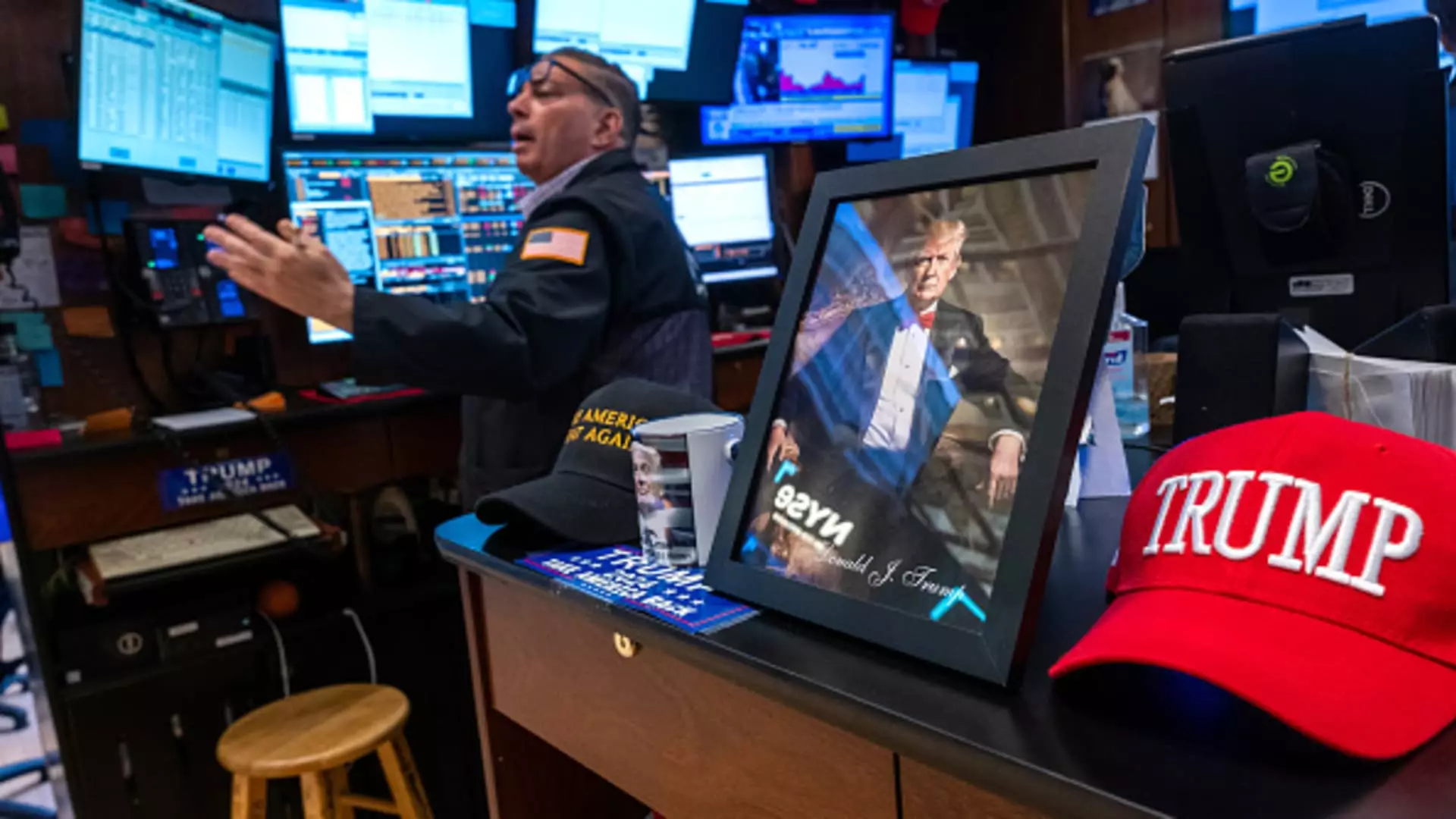In the ever-turbulent world of finance, the stock market often feels like a spontaneous soap opera: dramatic, unpredictable, and rife with tension. As we witness the swings in portfolio values during politically charged times—such as the presidency of Donald Trump—investors frequently find themselves engulfed in anxiety. The latest market movements triggered by tariff policies and trade disputes orchestrate a cacophony of confusion. However, as disquieting as these occurrences may seem, we must consistently remind ourselves of the underlying resilience of the market itself.
Recent analyses suggest that despite the psychological turmoil, portfolio balances may not reflect substantial damage since Trump’s inauguration. This raises an essential question: Are we witnessing genuine market decline, or are we merely reacting to external stimuli that have little long-term impact? With the S&P 500’s annualized return hovering around 1.58% during Trump’s second term as president, one could argue that patience in the face of perceived chaos could yield dividends.
Lessons from the Past: Volatility Doesn’t Dictate Fate
What shocks investors today has, in many ways, become a recurring theme throughout presidential administrations. Cathy Curtis, a distinguished financial planner, wisely reassures her clients that “volatility doesn’t predict direction.” This sentiment is more than just a cliché; it embodies a critical lesson about the markets. Over a historical backdrop, the market’s ability to bounce back from adversity remains robust. In contrast to the alarming peaks and troughs of Trump’s reign, one must appreciate the gains achieved during Obama and Biden’s early days in office, where the S&P 500 surged by over 30%.
Yet, not every presidency offers such rosy outcomes. Take George W. Bush’s initial term, for instance, which posed a stark contrast with a negative annualized return nearing 12%. Studying these precedents, we learn that it’s not about avoiding the volatility; it’s about continually investing, believing in the long-term trajectory of the stock market, and not falling prey to knee-jerk reactions that often lead to missed opportunities.
The Impulsive Investor: A Recipe for Regret
The urge to flee the market during unsettling times is a natural response, but it can lead to regrettable financial consequences. As Douglas Boneparth, another astute financial planner, points out, “Sharp daily declines can test resolve.” The emotional impulse to exit may prevent investors from witnessing a subsequent recovery that can benefit those who held their ground.
For instance, history shows that while panic sells were prevalent during significant market drops, those who retained their investments were later rewarded as markets rebounded. Moving beyond momentary tribulations and embracing a strategy of consistent engagement can be the antidote to the financial poison of impulsivity.
On a practical note, many investors approach their financial futures with a long-term perspective. Reflecting on nearly all presidential terms since Jimmy Carter reveals a noteworthy pattern: healthy returns over the four to eight-year periods. With the exception of Bush’s administration—thanks to the unforeseen Great Recession—most presidencies have seen stock markets flourish, disproving the notion that one bad year can taint decades of progress.
Utilizing Historical Insights for Future Strategy
Investors harbor an immense wealth of insights through history, and leveraging this knowledge can shape effective long-term strategies. Curtis uses illustrative tools, like the S&P 500 chart dating back to 1950, to demonstrate the concept of growth over the long haul. Imagine investing $1,000 at the dawn of the Truman presidency; by June 2023, that investment would have blossomed into approximately $3.8 million. This staggering figure serves as a testament to the enduring upward trajectory of the market, despite short-term volatility.
The overall takeaway is perhaps simple yet profound: Understanding historical financial data not only mitigates anxiety but empowers investors to make well-informed decisions against a backdrop of uncertainty. Just as turbulent waters are part of the sailing experience, the highs and lows of the market are integral to the investment journey. Striking a balance between patience and action, coupled with perspective, is essential for achieving long-lasting financial health.
In a world where immediate gratification is often the norm, the stock market reminds us—navigating its waves requires resilience, insight, and an unwavering belief in the journey ahead.

